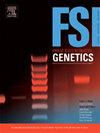野生动物犯罪背景下的人类DNA恢复:野生动物标本中痕量DNA收集方法的比较
IF 3.1
2区 医学
Q2 GENETICS & HEREDITY
引用次数: 0
摘要
法医DNA分析是在野生动物犯罪调查中应用最广泛的法医技术之一,用于确定野生动物的种类、性别、个体和地理位置。然而,在大多数其他刑事调查法医中,DNA分析指的是人类DNA分析,目的是识别受害者和/或肇事者。从野生动物标本(如象牙或毛皮)的表面恢复人类DNA图谱的能力,为在缺乏其他证据类型的情况下识别涉及野生动物犯罪的个人提供了机会。这项研究旨在比较四种不同的人体接触DNA恢复方法的有效性,棉签,蜂群拭子,泡沫拭子和微型胶带,从一系列野生动物衍生物的表面。四人一组处理象牙、大象、兽皮、蛇皮、海螺壳、鹿角和羚羊皮毛。随后,收集、提取、定量和分析DNA。泡沫拭子是一种非传统的接触DNA回收方法,在所有样品类型中回收的平均DNA浓度和等位基因数量最高,是一种有效的跨底物回收方法。除从羚羊皮毛中取样外,蜂群拭子是所有标本的第二佳恢复方法。迷你磁带和棉签在这项研究中表现相对较差,尽管这是目前执法部门使用的两种最常用的DNA恢复技术。象牙,产生了最高的平均人类DNA浓度,但矛盾的是,产生的供体等位基因数量明显较低。我们的研究结果表明,新鲜的接触DNA沉积物可以从多个野生动物标本中恢复,并建议在野生动物犯罪调查中,法医从业者应将尝试恢复接触DNA作为常规考虑。本文章由计算机程序翻译,如有差异,请以英文原文为准。
Human DNA recovery in the context of wildlife crime: Comparison of trace DNA collection methods from wildlife specimens
Forensic DNA analysis, used for the purposes of species, sex, individual, and, geographic determination of wildlife is one of the most applied forensic techniques in, wildlife crime investigations. However, in most other criminal investigations forensic, DNA analysis refers to human DNA profiling for the purposes of identifying victims, and/or perpetrators. The ability to recover human DNA profiles from the surfaces of, wildlife specimens, such as ivory or fur, opens up opportunities for identification of, individuals involved in wildlife crimes in the absence of other evidence types. This, study aimed to compare the effectiveness of four different human touch DNA recovery, methods, cotton swabs, flocked swabs, foam swabs, and minitapes, from the surfaces, of a range of wildlife derivatives. Groups of four participants handled ivory, elephant, skin, snake skin, conch shell, antler, and antelope fur. DNA was subsequently, collected extracted, quantified, and profiled. Foam swabs, a non-traditional method of, touch DNA recovery, recovered the highest average DNA concentrations and number, of alleles across all specimen types acting as an effective cross-substrate recovery, method. Flocked swabs performed as the second-best recovery method for all, specimens except when sampling from antelope fur. Minitapes and cotton swabs, showed comparatively poor performance during this study despite being the two most,common DNA recovery techniques currently employed by law enforcement. Ivory, yielded the highest average human DNA concentrations but paradoxically produced a, significantly lower number of donor alleles. Our results indicate fresh touch DNA, deposits are recoverable from multiple wildlife specimens and recommend that, attempted recovery of touch DNA should be a routine consideration by forensic, practitioners during wildlife crime investigations.
求助全文
通过发布文献求助,成功后即可免费获取论文全文。
去求助
来源期刊
CiteScore
7.50
自引率
32.30%
发文量
132
审稿时长
11.3 weeks
期刊介绍:
Forensic Science International: Genetics is the premier journal in the field of Forensic Genetics. This branch of Forensic Science can be defined as the application of genetics to human and non-human material (in the sense of a science with the purpose of studying inherited characteristics for the analysis of inter- and intra-specific variations in populations) for the resolution of legal conflicts.
The scope of the journal includes:
Forensic applications of human polymorphism.
Testing of paternity and other family relationships, immigration cases, typing of biological stains and tissues from criminal casework, identification of human remains by DNA testing methodologies.
Description of human polymorphisms of forensic interest, with special interest in DNA polymorphisms.
Autosomal DNA polymorphisms, mini- and microsatellites (or short tandem repeats, STRs), single nucleotide polymorphisms (SNPs), X and Y chromosome polymorphisms, mtDNA polymorphisms, and any other type of DNA variation with potential forensic applications.
Non-human DNA polymorphisms for crime scene investigation.
Population genetics of human polymorphisms of forensic interest.
Population data, especially from DNA polymorphisms of interest for the solution of forensic problems.
DNA typing methodologies and strategies.
Biostatistical methods in forensic genetics.
Evaluation of DNA evidence in forensic problems (such as paternity or immigration cases, criminal casework, identification), classical and new statistical approaches.
Standards in forensic genetics.
Recommendations of regulatory bodies concerning methods, markers, interpretation or strategies or proposals for procedural or technical standards.
Quality control.
Quality control and quality assurance strategies, proficiency testing for DNA typing methodologies.
Criminal DNA databases.
Technical, legal and statistical issues.
General ethical and legal issues related to forensic genetics.

 求助内容:
求助内容: 应助结果提醒方式:
应助结果提醒方式:


